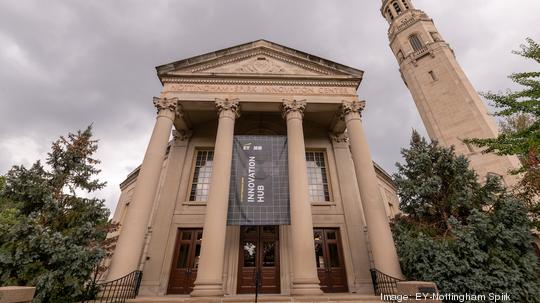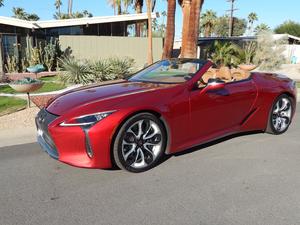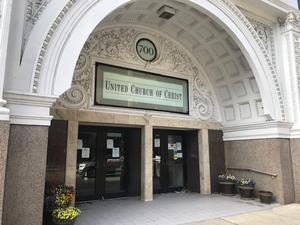
The folks at Ernst & Young, the global professional services network, and Nottingham Spirk Design Collaborative introduced their Cleveland innovation hub to the public on Tuesday.
EY-Nottingham Spirk Innovation Hub combines the depth and breadth of E&Y's professional practices with Nottingham Spirk's disruptive innovation process.
On Tuesday, the innovation and design experts demonstrated how manufacturers can use the hub to learn Industry 4.0 practices that head off stalled production lines, ensure raw material supplies, manage workers, and provide better experiences for customers.
The Cleveland Business Journal talked with Jerry Gootee, Ernst & Young's global advanced manufacturing sector leader, and John Nottingham, co-president of Nottingham Spirk, about what Industry 4.0 can mean to Northeast Ohio. This interview was edited for brevity and clarity.
What does Industry 4.0 mean?
Gootee: It's connecting devices on the shop floor and using the data they produce for improving operations. You can use embedded technologies such as sensors to track, trace and gain visibility on where materials are within the supply chain. Sales data can inform operations about what's selling and how to manage inventory. It's all about applying artificial intelligence to the data to improve your product. This drives more revenue for your customer, which, hopefully, adds to customer satisfaction. Meanwhile, product and customer data go back to the shop floor to improve operating performance.
Nottingham: Many Northeast Ohio legacy companies are at Industry 3.0. They have computer-controlled machines, but the machines are not connected to each other or to data-collection devices. Our companies know they need to get to Industry 4.0 to compete. This is a place they can come to understand what connectivity and data can mean to them. This is a way for them to get to that next level.
What percentage of Northeast Ohio manufacturers are at Industry 4.0?
Nottingham: Unlike some other sectors, manufacturing is behind. I'd say on a scale of one to 10, the manufacturing industry is probably somewhere in the two to three range. Think about how connected we are personally. We're all connected. We're all using data. We probably are somewhere in the range of seven or eight on that scale. But if you go into most production environments — not just in Northeast, Ohio — they're still pushing paper. The work hasn't been digitized. A lot of the machinery is not connected.
We've worked with a lot of manufacturers in Northeast Ohio to connect their machines to get that data. That's the first step to Industry 4.0. Once you have data, then you've got to do something with it. That's where a lot of digital applications create a lot of value.
How does Industry 4.0 affect what you do at the innovation hub?
Nottingham: Almost every industrial, commercial or medical product we design is connected. Data is king. All of a sudden, you have a connection with customers like you've never had before. It used to be that a company would make a product and, once a customer bought it, would never see it again. Now, customers want the product to have connectivity. Maybe it's reordering supplies for the product on a subscription model.
We talked about an electrical vehicle bike on our tour. It's going to be manufactured in Cleveland, and it's going to be connected because we want to be able to do predictive maintenance. We want to know the product is going to break before it breaks. Wouldn't you love that? That's what we're doing. Everything has a sensor. Everything is connected.
Gootee: Just about every business is going through significant change. For some, it's related to electrification. We've had several clients come here because their products are tied to the internal combustion engine supply chain, and they don't know what's going to happen with that technology in the next decade.
Or it may be related to environmental, social and governance (ESG), and sustainability. Where does Industry 4.0 play into that? Do you know how much greenhouse gases your plant or product creates? How do you improve? In many cases, we can take 25% to 33% of the cost out of production. But more importantly, we can take a significant amount of greenhouse gases out of that product and its production.
New tools can be used to calculate the impacts on cost and greenhouse gases by substituting materials in your products. In the past, maybe the cost factor weighed more heavily, but what we're seeing now is companies are looking at the environmental factor, too.
Won't Industry 4.0 cost manufacturers a lot of money?
Nottingham: We say to our client partners, "Don't look at it negatively, look at it positively. Don't be reactive, be proactive; get ahead of your competitors. Anything is possible." It's just a matter of putting a plan together and making it happen.
Gootee: We have a client at the innovation hub that sees a big, new market emerging for their product because it helps customers reduce their greenhouse gases. So, we're helping our client reinvent their product. It's got them quite excited about the growth opportunity. So it's creating a new market, and new opportunity and growth potential in addition to improving the environment.






